ink
Latest
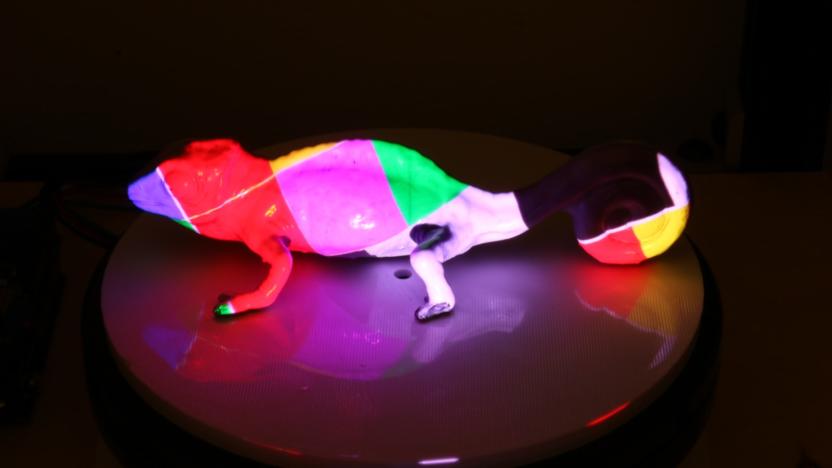
MIT’s color-changing ink could let you customize your shoes
Imagine if, rather than buy your favorite shoes in blue or red, you could buy one pair of shoes and change the color depending on how you feel each day. Maybe you'd decide to add multicolored flames or zebra print. A new, reprogrammable ink might let you do just that. PhotoChromeleon Ink, developed by MIT's Computer Science and Artificial Intelligence Laboratory (CSAIL), can change the color or pattern of an object when exposed to UV light.

MIT researchers made a living ink that responds to its surroundings
Researchers at MIT have developed a 3D printable hydrogel that can sense and respond to stimuli. The hydrogel is loaded with bacteria that can be genetically programmed to light-up when they come in contact with certain chemicals and, therefore, could be used as living sensors.

3D-printed bacteria ink could be used to treat burns
In a new study published today in Science Advances, researchers present a 3D-printable ink that contains bacteria and they say that depending on what species of bacteria it holds, the ink stands to have a number of useful applications. "Printing using bacteria-containing hydrogels has enormous potential, as there is such a wide range of useful bacteria out there," Patrick Rühs, an author of the study, said in a statement.
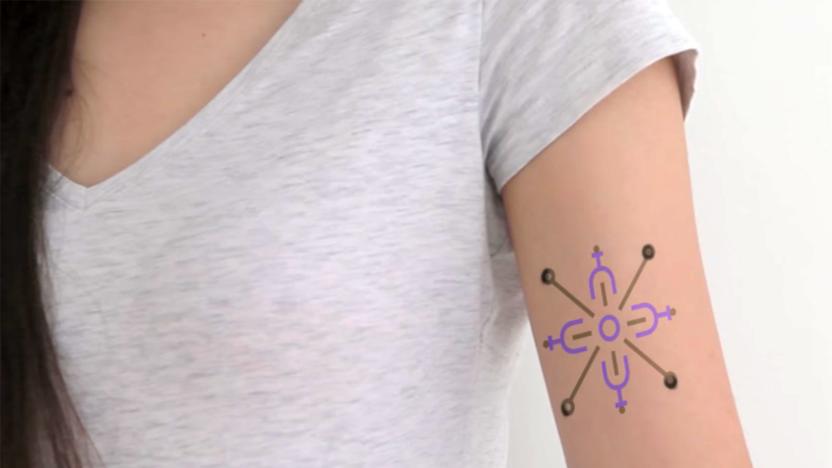
Smart tattoos turn your skin into a health tracker
There's a common problem with health-tracking devices like smartwatches: they're not really attached to you, which leaves you relying on a short-lived battery and a wireless connection. Even a self-powered patch has its limits. That's where Harvard and MIT think they can help: they've developed smart tattoos that effectively place health sensors in your skin, no power or wireless link required. The ink in the tattoos reacts to the chemical composition of your interstitial fluid, which reflects the state of your blood. A green ink grows more intense to let athletes know when they're dehydrated, while another green ink turns brown to warn diabetics when their glucose levels go up.

HP is turning trash into printer cartridges
All those printer cartridges from HP that usually cost an arm and leg will start helping to do some good in the world beyond your prints of kitten photos. During an event at its headquarters, HP announced that it is using recycled plastic from Haiti to manufacture select cartridges.

Air pollution makes surprisingly good art supplies
Plumes of diesel exhaust contain a mixture of things both nasty and harmless. A lot of it, however, is carbon. Carbon can be useful and (as you might recall from school) is often jet black in color. Start-up Graviky has created an exhaust filter that can pull 95% of the carbon soot from diesel exhausts, and then transform this into useable, purified, black ink or paint. The result is what co-founder Anirudh Sharma calls Air-Ink, and it's already being used in markers and oil-based paints. The process is far more sustainable than typical methods for making black carbon ink, which requires directly burning fossil fuels. The project is turning something we don't want, air pollution, into something we do: art. Oh, and billboard ads.
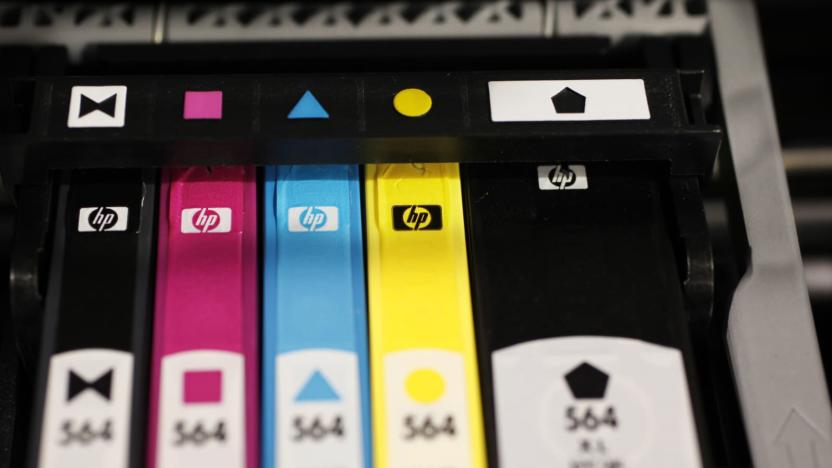
HP says it should've better explained blocking third-party ink
Following a recent update that blocked some third-party ink cartridges fore its printers, HP formally apologized to customers this week for how it communicated about the change. Earlier this month, the company updated its firmware making cartridges made by other companies unusable on its printers. HP cited quality and security reasons for switching up its authentication process. Those third-party options are typically cheaper and as you might expect, customers weren't happy about not being able to use those supplies.

Electron microscope draws nano-sized patterns in metal ink
One of the greatest challenges in designing electronics is drawing very fine details. You normally need lithography, which complicates the process by requiring masks. However, Oak Ridge National Laboratory has now found a way to write at an extremely fine level -- and even get a little bit creative. Its researchers have developed a technique that relies on an electron microscope to draw nanoscale patterns using metal ink. The team first creates a grayscale template to guide its work, and uses the microscope to shoot electrons into palladium chloride cells along that template. The cells neatly deposit raw palladium wherever the microscope goes.

Microsoft OneNote can help solve your math homework
Just in time for back to school season, Microsoft has made a few slick updates to Office 365, intended to help users get more out of their pen-based digital notes. Building on the beta launch of Windows Ink, OneNote has added new ink effects, a replay feature and a new intelligent math coach that can help you solve handwritten equations.

Oree's real ink-and-paper stylus is not for starving artists
Known for chic, artisanal digital products like a $190 walnut keyboard, French company Orée is going after the creative set with the Stylograph. Fabricated from pure copper, the ink stylus lets you transcribe your scribblings from paper over to an iOS or Android device. The idea is to marry the tactile sensation of drawing on paper with the flexibility of digital formats. The pen is nearly a work of art in itself, but it comes with a $300 price tag -- double that of rival Livescribe.

Samsung printers automatically re-order ink with Amazon Dash
Amazon didn't stop at handy buttons for its Dash re-ordering tech. Back in January, the company announced a collection of devices that leverage the system to automatically order supplies when you're running low. That lineup includes a number of printers from Brother that take care of ink refills when levels begin to disappear. Amazon has now added four Samsung printers to the fold, tapping Dash Replenishment to make sure you're able to continue putting ink to paper as needed.

Ferrofluid 'font' produces trippy, one-of-a-kind art
You may have seen ferrofluid (aka magnetic ink) used for clever science demonstrations in school, but it might just get a much cooler application before long. Linden Gledhill and Craig Ward have developed Fe2O3 Glyphs, wild-looking characters created by putting a ferrofluid between glass plates and subjecting it to spinning magnetic fields. The result is a sort of anti-font -- while the "letters" look like they could be part of an alien language, they're so unique that you'd likely never produce the same effect twice.

Epson's new printers ease refill woes with ink tanks
We've all been there. It's late, and you have a final project or presentation due first thing in the morning. You've been awake for days and you've finally finished. Only when you go to print, there's no ink. Epson's latest printers offer a simple solution that should go a long way to remedying the issue: they hold more ink. The company's line of EcoTank all-in-one printers house so-called Supertanks instead of individual cartridges that are refilled with bottles of ink. What's more, each of the five models has a reservoir that holds the equivalent of around 20 sets of traditional cartridges (depending on the model, of course) and two support WiFi printing via a mobile device.

Stretchy conductive ink puts computing power on your clothes
Those dreams of having computers in your clothing might be more realistic than you think. Japanese researchers have developed a printable conductive ink that maintains a circuit even when you stretch fabric to three times its usual length -- you could have athletic gear with hidden activity trackers, sensors and other computing devices. The key is a careful mix of fluorine, an organic solvent and silver flakes which, when combined, keeps transmitting electricity even under heavy abuse.

How to build a homemade version of the Adobe Ink stylus and Slide ruler for iPad
Earlier this year, Adobe introduced Ink & Slide, an iPad stylus and ruler combination that works with its new drawing and drafting app, Adobe Line. The accessory pair will set you back US$200, but you can build your own for a fraction of the cost. The easiest way to duplicate most of the functionality of the Adobe Ink is with a basic Q-tip and aluminum foil stylus (CNET video instructions), which will cost less than $10 to make. It'll allow you to draw on your iPad, but lacks the pressure-sensitivity that is available in the Adobe version. You'll have to decide if the pressure feature is worth the extra cost. The other half of the toolset is the Slide, a digital ruler that interacts with the Line app, allowing you to quickly draw lines and other shapes. The Slide has two capacitive points that interact with the iPad and relay information to the Line app. As shown in this DIY video from Great iGear (via PadGadget), you can duplicate the functionality of the Slide with two pieces of capacitive foam and a 4-inch screw from your local hardware store. If you don't mind the homemade look of the DIY tools, you can easily build them for less than $30 and in less than an hour.
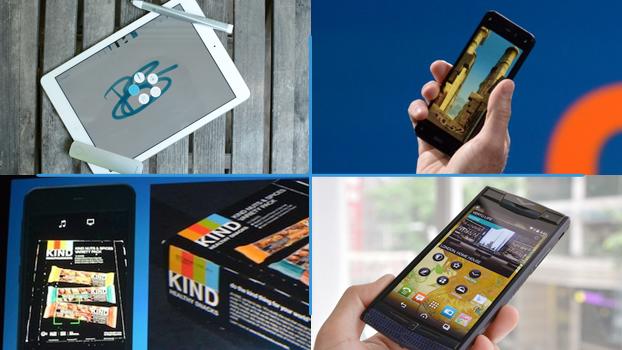
Engadget Daily: Amazon's Fire phone, Adobe's digital sketching hardware and more!
Today, we take a look at Amazon's new handset, the Fire, go hands-on on with the $22,000 Vertu Signature Touch, learn about Amazon's new Firefly feature and review Adobe's set of premium sketching accessories. Read on for Engadget's news highlights from the last 24 hours.

GE's metallic ink can put tiny sensors inside jet engines
Embedded tech can fit into some incredible spaces, but it can't yet fit everywhere; there are places that are simply too harsh or small for modern technology. If GE gets its way, though, just about any surface will be fair game. Its Direct Write technology uses ink made from either metals or metal oxides to print tiny, flexible sensors that both fit into tight spots and survive conditions that typically fry electronics. You could see sensors inside the hot environment of a jet engine, or put both pressure and temperature sensors into areas that normally don't have room for anything.
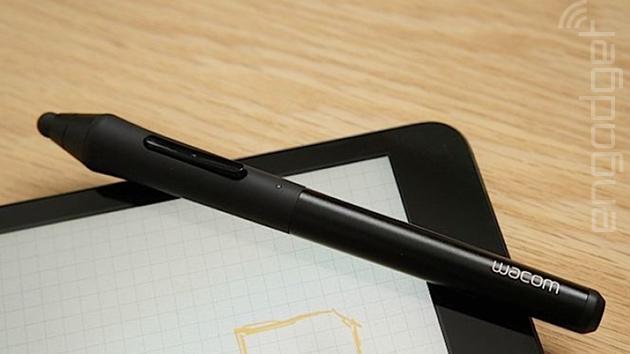
Wacom lets people share handwritten notes across devices and platforms
Wacom has been pushing into the world of mobile for a while, and its efforts have just culminated in a pretty bold move: A single, cross-platform standard for sharing handwritten notes and sketches between users, regardless of whether they're using a stylus or a finger, an iPhone or a PC, an app or a browser. The tool is called "WILL" -- "Wacom Ink Layer Language" -- and it captures a pen stroke's coordinates, pressure and the identity of its creator (through a unique "Pen ID"), as well as allowing the scribble to be edited by others. Users can also see other people's handwriting being created in real-time, i.e. we're not just talking about static images. Beginning next month, Wacom will promote WILL by distributing SDKs for iOS, Android, Mac OS and Windows, as well as for browsers and cloud platforms. These SDKs are meant to make it easier for developers to create apps that accept signatures scrawled on a touchscreen, or DIY smileys, or hand-drawn highlights on a cloud document, or any other sort of handwritten input. Of course, the concern with any such format is that it'll need to be embraced by a large number of companies in order to reach a tipping point and become widely accepted. Wacom doesn't seem to be ready to announce even a single partner just yet, but where there's a will... (Ahem, sorry.)

You can draw circuit boards onto paper with this pen (video)
When dreaming up that world-changing invention, wouldn't it be great if you could just sketch out the circuits and have them magically work? That's the idea behind Circuit Scribe, a ballpoint pen that's full of quick-drying ink that'll help you doodle your circuits on notebook paper. Emerging out of research from the University of Illinois, the team is now accepting your cash through Kickstarter to help bring it into the real world. $20 will get you a pen and an LED component, while $30 will buy you a basic kit, complete with plenty of accessories to help you test the systems to their fullest. We imagine it'll be a big hit with STEM educators as well as hobbyists, but if you're not yet convinced, check out the video to watch it in action.

Ink traders finally accepting new inks
If you're looking to get a Darkmoon Deck made before the end of the faire, you might be interested to know that despite a false start earlier this week, the Ink Traders and inscription vendors now accept trades of 10 Ink of Dreams for a Starlight Ink. Ink Vendors finally updated. Very sorry for the delay. - Greg Street (@Ghostcrawler) October 12, 2012 The Darkmoon Faire is only around once a month, and the one on now is ending this Sunday, October 14th. Unless the Faire is going on, you can't trade, for example, a Crane Deck in for a Relic of Chi Ji. This expansion, unlike in others, Darkmoon Cards require an item that can only be made once a day by scribes, the Scroll of Wisdom. Scribes who have been hanging onto their Scrolls should probably look into making them into cards now that the inks can be gotten cheaply, since by the time the next Faire rolls around, there will be 3 more weeks worth of daily cooldowns waiting to be turned into cards. These trinkets range from pretty good to among the best in slot for most classes, so almost everyone can use one, and many people really want one. Additionally, since the Starlight Inks have been so expensive lately, the epic quality shoulder enchants have been quite expensive. Now that you can trade the much less expensive Ink of Dreams in for them, you should see the prices lower on the Greater Ox Horn Inscription, the Greater Crane Wing Inscription, the Greater Tiger Claw Inscription, and the Greater Tiger Fang Inscription. Maximize your profits with advice from Gold Capped. Want to know the very best ways to earn 10,000 gold? Top gold making strategies for auctioneers? How about how to reach 1 million gold -- or how one player got there and then gave it all away? Fox and Basil are taking your questions at fox@wowinsider.com and basil@wowinsider.com.










